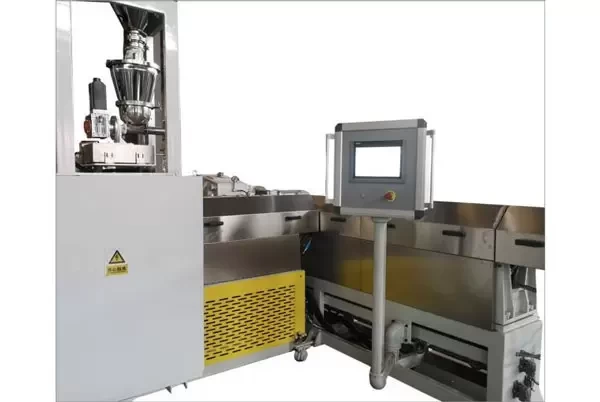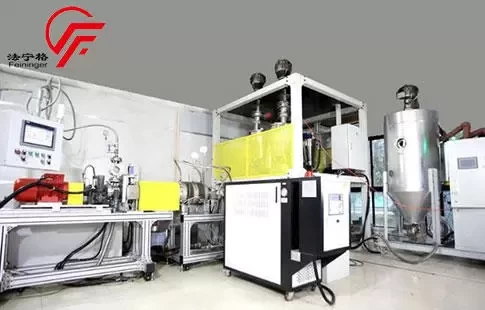Producing high-quality PET foam sheets is an intricate process that involves multiple stages, from raw material preparation to extrusion and foaming. Despite the advanced technology and machinery used, manufacturers often face several challenges. This article explores the common issues in PET foam sheet production and provides insights into how these challenges can be effectively addressed. Featuring Feininger's state-of-the-art PET sheet extrusion line, we'll see how their solutions ensure high performance, low energy consumption, durability, and versatility.
1. Maintaining Consistent Quality
Challenge:
Ensuring the consistent quality of PET foam sheets can be difficult due to variations in raw materials, temperature fluctuations, and inconsistencies in the foaming process.
Solution:
Feininger's PET sheet extrusion line incorporates advanced automation and control systems that monitor and adjust parameters in real-time. This ensures that the production process remains stable and consistent, leading to uniform product quality. The modular design allows for precise customization, ensuring that each production line meets specific quality standards.
2. Energy Consumption
Challenge:
High energy consumption during the production process can significantly increase operational costs and impact the environmental footprint of manufacturing activities.
Solution:
Feininger's extrusion lines are designed for energy efficiency, utilizing cutting-edge technology to minimize power usage. The application of advanced foaming technology, such as CO2 foaming, not only reduces energy consumption but also eliminates the use of harmful fluorine-based foaming agents. This eco-friendly approach aligns with sustainable development goals by reducing greenhouse gas emissions and lowering production costs.
3. Environmental Impact
Challenge:
Traditional foaming methods using fluorine-based agents have adverse effects on the environment and human health.
Solution:
Feininger's PET sheet extrusion lines use composite foaming agents, specifically CO2, which are far more environmentally friendly. This technology not only reduces the production cost but also achieves zero emissions of greenhouse gases, making the production process more sustainable and environmentally responsible. Furthermore, PET foam boards produced this way are recyclable, enhancing their environmental protection performance.
4. Material Efficiency and Waste Reduction
Challenge:
Maximizing material efficiency and minimizing waste are crucial for cost-effective production and sustainability.
Solution:
Feininger's continuous research and technological advancements have led to the development of production lines that improve material efficiency. By optimizing the extrusion and foaming processes, these systems reduce material waste and ensure that the maximum amount of raw material is converted into high-quality PET foam sheets. The recycling capabilities of PET foam boards further contribute to waste reduction and environmental sustainability.
5. Meeting Diverse Industry Requirements
Challenge:
PET foam sheets are used in various industries, each with specific requirements for mechanical properties, thermal insulation, and durability.
Solution:
Feininger's PET sheet extrusion lines offer versatility and customization options to meet diverse industry needs. The ability to tailor the production line to produce foam sheets with specific properties ensures that they can be used in a wide range of applications, from building insulation and sandwich structures to sports equipment and aerospace components. The superior mechanical strength, thermal insulation, and environmental performance of PET foam boards make them suitable for demanding applications.
6. Adapting to Technological Advances
Challenge:
Keeping up with rapid technological advancements in production processes and materials science is essential for maintaining a competitive edge.
Solution:
Feininger continuously invests in research and development to stay at the forefront of technological innovation. By integrating the latest advancements in automation, material science, and production techniques, Feininger's extrusion lines are able to deliver high productivity and long-term stable performance. This commitment to innovation ensures that businesses using Feininger’s technology remain competitive and capable of meeting future industry demands.
Conclusion
The production of PET foam sheets presents several challenges, from maintaining consistent quality and reducing energy consumption to minimizing environmental impact and meeting diverse industry requirements. Feininger’s PET sheet extrusion lines address these challenges through advanced technology, energy-efficient processes, and customizable solutions. By leveraging Feininger's expertise and continuous improvements, businesses can enhance their productivity, reduce costs, and contribute to sustainable development. Adopting Feininger's cutting-edge PET foam sheet production technology ensures high performance, durability, and versatility, making it an invaluable asset for companies in the plastics industry.

 24 Nov 2023
24 Nov 2023 
 22 Aug 2024
22 Aug 2024 
 28 Mar 2025
28 Mar 2025